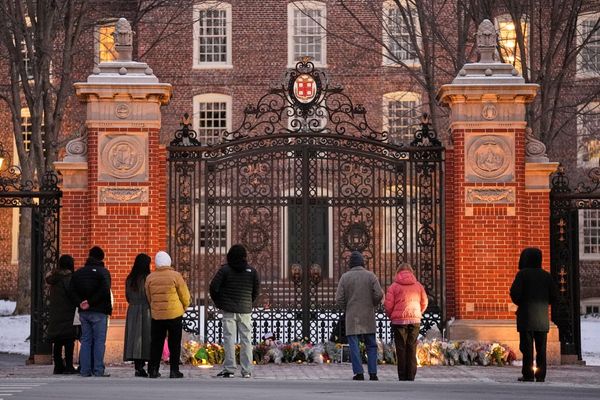
In an opinion piece published in The Times of India, D Subbarao, former IAS officer and former RBI governor, on Wednesday called for lowering the upper age limit for the civil services examination to 27 years and reducing the number of attempts to three. Last month, following the declaration of civil services exam results, Yashovardhan Jha Azad, a former IPS officer and former central information commissioner, had also voiced the need for such reforms. These suggestions are not new; various committees and civil services reform commissions have made similar recommendations over the decades.
Subbarao goes beyond the usual reasoning for younger civil service entrants – greater receptiveness to training, more innovation, and longer career spans. He argues that stricter limits would deter candidates from wasting years on repeated attempts, and from mastering exam-taking techniques rather than embodying the merit UPSC seeks. While not advocating for the current lateral entry system, he proposes a parallel recruitment process for mid-career professionals in their 40s via a competitive exam. However, he overlooks the entrenched political resistance, social dynamics, and student opposition that have stymied such reforms in the past – and are even more formidable now.
Subbarao acknowledges that the age relaxation was introduced to create a level playing field for candidates from disadvantaged backgrounds. Yet he misses the political reality: the idea of “going too far” with age relaxation lacks electoral merit. For many across India’s social strata, more attempts at the exam are seen as a potential ladder to class mobility. In fact, the historical trajectory of the age-limit debate – from colonial India to post-Independence – has seen stronger demands for raising the age bar than for lowering it. Governments have repeatedly overruled expert bodies suggesting a reduction. A glance at these developments highlights the divergence between political momentum and expert advice.
The journey of a reform
In 1876, a landmark public meeting at Calcutta’s Town Hall, attended by 3,000 educated Indians, was triggered by Secretary of State Lord Salisbury’s decision to reduce the civil services upper age limit to 19. This sparked a movement demanding both an increased age limit and simultaneous exams in India, which were then held only in London. Although the 1854 Macaulay Committee had opened the civil services to Indians via merit-based exams, the playing field remained uneven – exams were Eurocentric, held only in London, and the upper age limit was just 22. By the time Satyendra Nath Tagore became the first Indian to clear the ICS in 1864, the age limit had been reduced to 21, and in 1876, to 19.
British officials were well aware of Indian discontent. In a confidential note to Lord Salisbury, Viceroy Lord Lytton wrote that the reforms were being seen as “deliberate and transparent subterfuges” to exclude Indians from the service. Lytton himself wanted to scrap the competitive exam entirely and revert to a nomination-based system. Others, like Lord Ripon, were more sympathetic. Still, the movement gained ground. Organisations such as the British Indian Association amplified the call. In 1885, the Indian National Congress passed a resolution demanding a higher age limit – specifically, raising it to 23.
Despite slow progress, the number of Indians in the ICS rose gradually due to initiatives such as the Montagu Declaration’s 33 percent Indian quota (1917), the Lee Commission’s 50:50 Indian-to-British ratio, and the introduction of simultaneous exams in India in 1922. Deepak Gupta, former UPSC chair and 1974-batch IAS officer, calls this the “Indianisation of the ICS”. The numbers back it: there were 52 Indians in 1907, 78 in 1919 (out of 1,255), but by 1940, Indians outnumbered British officers in the service.
After Independence, the ICS became the IAS, and “civil services” came to include over 25 services such as the IFS, IPS, and IRS. With reservations for SCs and STs in public employment, new demands for relaxed age limits emerged, citing educational disadvantages. Age relaxation for SC/STs was granted in 1955; for OBCs, it followed the implementation of the Mandal Commission’s recommendations in 1993, but was only introduced in 1995. Similar debates are now unfolding for the Economically Weaker Sections, granted 10 percent quota in 2023.
Today, the upper age limit is 32 for general category candidates, with five years’ relaxation for SC/STs (37 years) and three years for OBCs (35 years). Since 1948, when the upper limit was 24, it has steadily increased – fueling proportional rises for reserved groups. Expert bodies, however, have consistently criticised this trend, calling instead for a rollback.
The rationale for raising the age limit has included the rural-urban education divide, late bloomers, and the need to accommodate longer technical courses. More recently, it has also been seen as a way to adapt to changing exam patterns. In contrast, reform panels argue that younger entrants are more open to institutional values, can serve longer careers, and won’t waste years in repetitive exam prep. Late entry limits career growth, especially for reserved category candidates, who may miss top-level positions due to curtailed tenure.
Recommendations unimplemented
Since Independence, multiple committees have weighed in. The 1955 Public Services (Qualifications for Recruitment) Committee recommended an age band of 21–23. The Kothari Committee (1976) and Satish Chandra Committee (1989) supported an upper limit of 26. But political imperatives, particularly post-Mandal, saw the government raise it to 28, and later 30. By the 2000s, committees headed by Yoginder Alagh and PC Hota proposed lowering the upper age limit to 26 and 24, respectively. The Second Administrative Reforms Commission (2008) echoed this, recommending a limit of 25.
None of these recommendations were implemented. In February 2014, student protests over changes in the exam pattern led the UPA government to increase the age limit to its current levels. Ironically, the same Arun Nigavekar Committee whose exam reforms had triggered the protests had also recommended an upper age cap of 25. Yet even six years later, this “adaptation” period shows no sign of ending. Once the age limit was raised, it became politically hazardous to reverse it.
The political calculus is clear: lowering the age limit risks alienating a vocal and aspirational constituency.
Civil services recruitment in India is more than an HR process – it’s a vehicle for social mobility and empowerment across caste and class lines. The echoes of 1876 still linger. Some scholars argue that Lord Salisbury’s original aim in reducing the age limit was to curb prolonged coaching and encourage merit. But his intent was drowned in the agitation it provoked. Over a century later, the same risks keep Indian governments from revisiting this terrain. The steel frame of the state now supports a powerful political constituency – one that only pushes for a higher and higher age bar.
If you liked this piece, let our reporters tell you why you should subscribe to Newslaundry.
Newslaundry is a reader-supported, ad-free, independent news outlet based out of New Delhi. Support their journalism, here.







